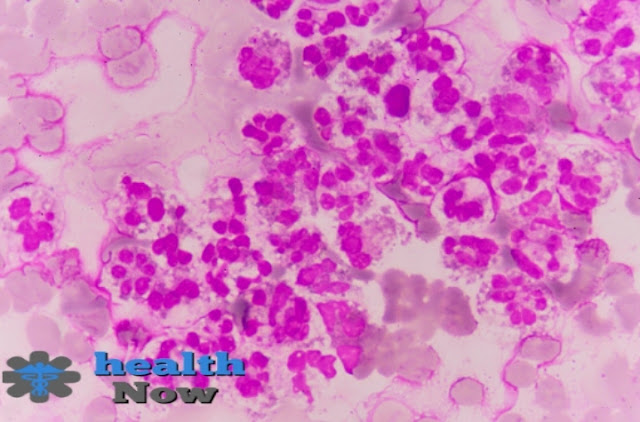sepsis and heart failure.
 |
| Causes of sepsis and heart failure? And what is its treatment? |
sepsis and heart failure. It is a life-threatening condition that arises when the body's response to infection affects its tissues and organs. Normal signs and manifestations incorporate fever, expanded pulse, expanded respiratory rate, and disarray.
There may likewise be manifestations related to a particular disease, for example, a hack joined by pneumonia, or agonizing pee joined by kidney contamination.
In the youthful, the older, and individuals with debilitated resistant frameworks, certain contaminations may not show any manifestations and the internal heat level might be low or ordinary rather than raised. sepsis and cardiovascular breakdown. Serious sepsis causes organ brokenness or inadequate bloodstream.
Insufficient bloodstream might be shown by low circulatory strain, high blood lactate, or low pee creation. Septic shock is a drop in circulatory strain because of sepsis and cardiovascular breakdown. which doesn't work after being given sensible measures of intravenous liquids.
produces sepsis and heart failure. An immune response caused by an infection. Most ordinarily, the contamination is bacterial, however, it might likewise be from growths, infections, or parasites. Normal destinations of essential disease incorporate the lungs, cerebrum, urinary plot, skin, and stomach organs.
Hazard factors incorporate youthful or advanced age, and a debilitated invulnerable framework from conditions like malignant growth, diabetes, injury, or consumption. The more seasoned demonstrative strategy depended on the satisfaction of something like two measures for fundamental fiery reaction condition (SIRS) because of assumed contamination.
Causes of sepsis and heart failure.
The patient develops sepsis and heart failure. For several reasons and factors, which are as follows:
- Infectious sepsis, for example, appendicitis, peritonitis, hepatitis, or cholecystitis.
- Focal sensory system infection: Treated by irritating the brain or spinal cord.
- Lung infections: one of the most important causes of bacterial pneumonia.
- Skin infections: Cellulitis is the most common form of bacterial disease that enters the skin through an intravenous catheter (intravenous catheter).
- Urinary tract diseases, such as frequent contamination of urinary parcels by the urinary tract (catheter to strain urine).
- Symptoms of sepsis and heart failure.
- Symptoms of an inflammatory reaction are caused by a germ or other contaminant defined as an infection. Symptoms of a common inflammatory reaction include:
1. Initial symptoms of septicemia.
Among the most prominent symptoms that accompany the patient with sepsis are the following:
- An increase in body temperature above the normal level by more than 38 ° C, or a decrease below 36 ° C.
- An increase in the frequency of breathing by more than 20 breaths per minute.
- A fast heartbeat (tachycardia) of more than 90 beats per minute.
- An increase or decrease in the number of white blood cells (leukocytes) above the normal level.
- If the patient has at least two symptoms, the doctor should be contacted immediately.
2. Symptoms of severe septicemia
Severe sepsis results when there is organ damage, and the patient must have two presentations to say his condition is serious.
- Spots that indicate a change in skin color.
- Decreased level of urination.
- Changes in mental abilities.
- Low degree of platelets in the blood.
- Breathing problems.
- Heart function disorders.
- Chills are brought about by low internal heat levels.
- Loss of consciousness and fainting.
- Very tired and tired.
Symptoms of sepsis and heart failure.
There are three unique stages of sepsis and heart failure, and each stage has specific manifestations that we will isolate under:
1-stage one: slight rot.
- Fever and high temperature
- An increase in the number of pulses greater than 90 beats each moment.
- Breathing increases by more than 20 breaths per moment.
- General illness and irritation.
2- The later stage: severe rot
- Pale spots on the skin.
- Decreased frequency of urination.
- Changes in mental abilities.
- Decreased amount of platelets (which help increase their thickness).
- Breathing problems.
- Heart working problems.
- Shivering and shivering due to the low level of internal temperature.
- Cognition loss and fainting.
- Fatigue and severe deficiency.
3- Third stage: septic shock
Usually, the side effects of this dangerous stage are equivalent to those of the severe stage of sepsis, but with the expansion of another indicator, a sharp decrease in circulatory stress.
Treatment of sepsis and heart failure.
 |
| Treatment of sepsis and heart failure. |
Sepsis and heart failure can rapidly progress to septic shock, which can prompt passage if treatment is not obtained quickly.
- Insulin to balance glucose levels.
- Anti-infective agents to combat contamination.
- Certain medications to raise the pulse.
- Pain relievers.
Serious cases of sepsis may require massive amounts of intravenous arrangements and instruments to help the patient relax. The primary engine rot is also treated.

